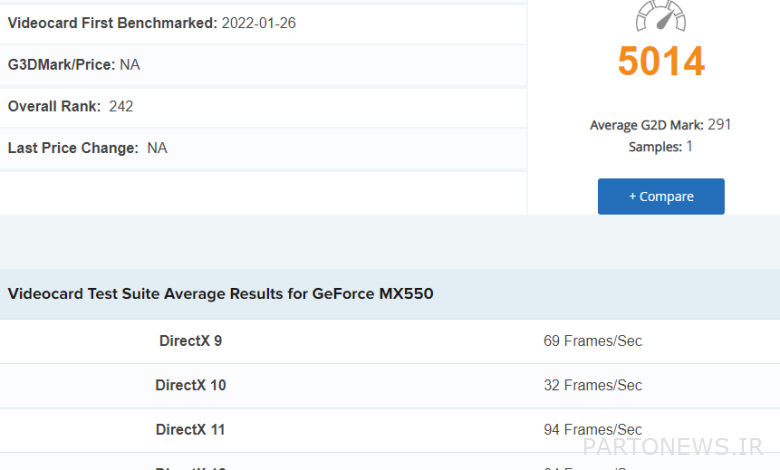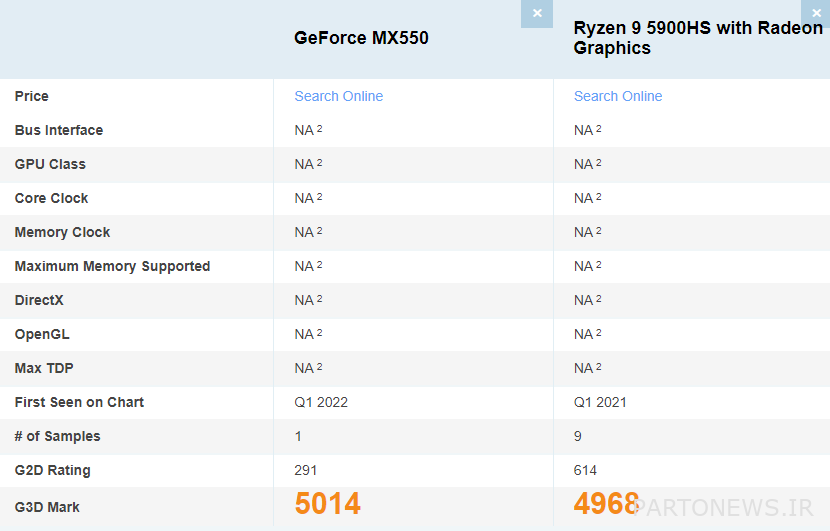GeForce MX550 Benchmark in PassMark – Integrated Graphics!

Due to the disclosure of the GeForce MX550 low-end graphics benchmark PassMark Apparently you should not expect much from it because it can only act like integrated graphics. Although the green team is focused on the GeForce RTX 3090 Ti high-end card these days, that does not mean that it has abandoned the lower-end category and happened to be fully active.
The company recently unveiled the GeForce RTX 2050 notebook graphics and later the desktop version of the GeForce RTX 3050, both of which support RTX and DLSS. Even a completely low-end MX series graphics received a minor update last December.
The GeForce MX550 is a stand-alone graphics based Turing architecture for multimedia laptops. These types of notebooks may not be as attractive as gaming models, but they are interesting due to the lack of separate graphics and reliance on integrated models. In fact, with today’s more powerful integrated graphics, we have to ask ourselves what is the need for MX series graphics.
See the first MX550 benchmark on the PassMark website, which shows a score of 5014 in the G3D Mark test. This is very close to the Vega 8 integrated graphics score on the Ryzen 9 5900HS processor.
GeForce MX550 low-end graphics benchmark in PassMark
The Ryzen 9 5900HS scores 4968, which means that the MX550 is only 0.9% faster. PassMark graphic benchmarks are not very popular, of course, and therefore there are a limited number of different components in this benchmark. Here we compare the MX550 score with the 5900HS Integrated Nine graphics score.

The MX550 uses the TU117 graphics chip, which is actually the slowest Turing architecture chip. There is no support for Ray Tracing and DLSS on this chip, but obviously in this category no one expects the mentioned capabilities because we are not on the side of gaming graphics. Nvidia has not yet shared the thermal power of the MX550. More details will be released at the time of release this spring.
No points
wait a little…

